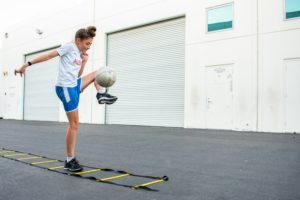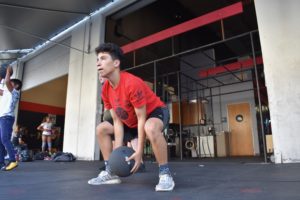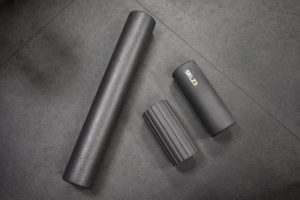Shin splints is a catch-all term that refers to pain experienced below the knee and is common to different types of athletes: runners, basketball players, tennis players, dancers, and military recruits. This is most common in beginner or novice level athletes that have a sudden change and/or increase in activity. Regardless of the type of activity, four words describe what led to the injury: too much, too soon.
Regardless of the type of activity, four words describe what led to the injury: too much, too soon.
Pain in the lower leg with shin splints typically occurs in two places: on the front outside part of the shin, or the inside of the lower leg. Symptoms include tenderness, soreness, mild swelling, and/or general pain. The pain may stop when you stop activity, but be weary if it continues beyond activity. It is important to note here that continuing activity may lead to stress reactions or stress fractures, which are marked by similar symptoms, but includes a definite spot of sharp pain. Another condition which may be confused with shin splints is anterior compartment syndrome where the swelling of muscles within a sheath/compartment creates pressure that leads to pain, unusual nerve sensations, and/or muscle weakness.
Here are great rehab and strengthening exercises to prepare for high-impact activity:
Write the alphabet with your toes. You can do this either seated or standing. Standing while doing this adds a balance and stability component. Perform with both feet.
Alternating toe raise-heel raise. Perform 2-3 sets of 12-15 repetitions.
Walk – On your heels for about 20 feet, then walk on your tippy toes for 20 feet. Walk back to your start line and repeat 2-3 times.
Heel drops – These can be performed by either starting with your toes on the ground and heels raised, then slowly lowering the heel to the ground; or standing on the edge of a step with your heels off the edge and slowly lowering the heels to a stretched position. The key here is making sure the muscle is tense and loaded before lowering the heel. This movement can start from a seated position and progressed to standing and/or single leg variations. Perform 2-3 sets of 8-12 repetitions.
Single leg weight shifts – Start in a standing position with heels raised off the ground. Shift your weight from one leg to the other and back again for 30 seconds. Perform 2-3 sets of 30 second bouts.
Hops – Upper body supported hops; bilateral, single leg, jump rope — feet! Perform 2-3 sets of 30 second bouts.
Stretch – Hold each stretch for 30-60 seconds and repeat 2-3 times.
Calf – Use a wall, curb, or other object to elevate your toes while your heel remains on the ground. Alternatively, you can face a wall and place your hands at about eye level. Place one foot 12-18 inches behind the other foot. Keep your rear leg straight and heel on the floor; slightly lunge forward into the wall while bending the knee of the forward leg.
Achilles – Same as above, except bend the knee of the rear leg.
Anterior shin – Start in a kneeling position and sit on your heels while keeping the top of your foot flat on the floor. If this position is too painful, or you have knee problems, then stretch from the standing position by tip-toeing on one foot, then curl your toes. Keep your foot/ankle relaxed and gently push the ankle forward.
Foam roll – Your calves and other meaty portions of your lower leg. Spend about 30-60 seconds in each area and follow up with any of the above mentioned strengthening exercises.
It’s a bummer when you have to sit out because you’re hurt. But take the opportunity to find alternative low impact cardio exercises, such as swimming, pool running, bike riding, or rowing to continue training while your lower legs heal. As you return to running, avoid hard surfaces at first and increase mileage slowly. That being said, don’t wait for injury to do the exercises stated above. Get a leg up on injury and train with purpose.
Get a leg up on injury and train with purpose.
As always, I hope this helps! If you have any questions or would like to read about certain topics, send us an email at TeamSP@SportsPerformancePT.com.
-Shane Adamos, MS, CSCS, CF-L1
For more tips on optimizing athletic performance FOLLOW US on:
- Instagram: http://www.instagram.com/SportsPerformancePT
- Facebook: http://www.facebook.com/SportsPerformancePT
- YouTube: http://www.youtube.com/c/SportsPerformancePT
















